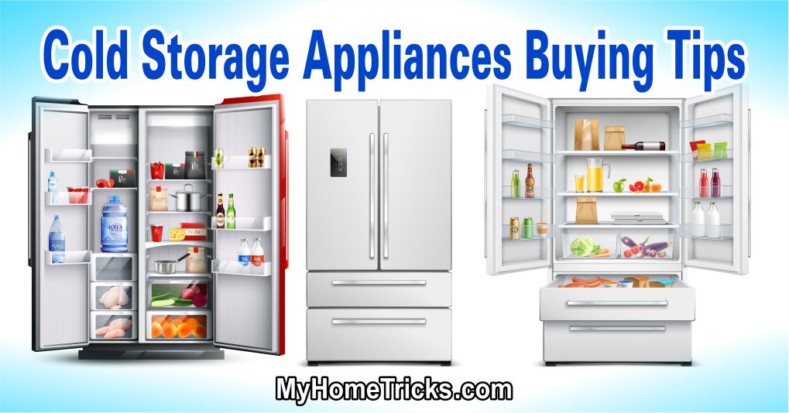Cold Storage Buying
Are you planning to buy a cold storage device for your home? Since these devices are usually long-lasting, we make this type of purchase only several times during our life. Therefore, there are few people who can say that they are very experienced in purchasing cold storage devices. This means that we need to take advantage of other people’s experiences. In this article, you will find some tips that will be useful to you during such purchases.
Refrigerators and Freezers:
Refrigerators and freezers are invaluable items of equipment in the kitchen. Both of these appliances ensure that we have a wide choice of safe, fresh food at any time of the year, and they can help us create a varied, healthy diet.
Choosing Cold Storage Appliances to Buy
When selecting a refrigerator or a freezer, consider the needs of your household carefully. Decide on the capacity that you require, taking into account the space available and the foods you store most often, such as garden produce or convenience foods.
- Using Baskets: Add extra storage baskets to a chest freezer. They will make it much easier to find and organize the contents of the freezer. Extra storage baskets can usually be ordered from the manufacturer.
- Drawer Markers: If you choose an upright freezer, look for a model that has content cards on the front of the drawers. These will help you keep track of stored items. List the foods in each drawer on the attached card.
- Checking Temperature: When choosing a freezer, look for one with a built-in temperature indicator on the outside. This will allow you to check that the appliance is running efficiently without opening the door.
- Moving Easily: If your house has solid floors, choose a refrigerator or freezer with casters, since they will make the appliance relatively easy to move. Meanwhile, casters can damage soft floors such as vinyl. Don’t forget to consider this point.
- Lighting the Interior: Check whether a freezer has an interior light, which is especially useful in a chest freezer. If not, keep a battery-operated clip-on light handy so that you can see the contents easily.
Buying a Freezer
- Assessing Capacity: Allow 2 cu ft (57 liters) of freezer space for each person in your household, together with an extra 2 cu ft (57 liters) if you entertain frequently.
- Fitting the Space: If space is tight, choose an upright freezer, which will take up less floor space than a chest freezer.
- Positioning a Freezer: Choose a model that will allow you to have enough space to open the freezer door or lids. The door of an upright freezer may need to be opened at an angle of more than 90° for the drawers to be pulled out. Your device must be structured to suit the positioning that this requires.
Buying a Refrigerator
- Assessing Capacity: Make sure that your refrigerator is large enough for your needs. Allow 8 cu ft (228 liters) for the first two people in the household, then another 1 cu ft (28 liters) for each additional person.
- Reducing Workload: For easy maintenance, it is best to choose a “frost-free” refrigerator-freezer, as these do not need to be defrosted.
- Selecting Shelves: Make sure that refrigerator shelves are adjustable to accommodate large items.
Installing Appliances
- Adjusting height: Ensure that your refrigerator or freezer is stable by using a level to check its levelness, and adjust the legs or casters as needed.
- Moving easily: If you need to move an appliance without casters, place an old piece of carpet underneath the foot to make it easier to slide.
- Avoiding dampness: To allow proper air circulation around a freezer stored in a garage, place it on blocks to raise it 2 inches (5 cm) off the ground.
When purchasing cold storage devices for your home, it’s helpful to consider their intended usage. Imagine how you’ll use the appliance and what features will be most important to you. Visualizing this scenario will help you choose the right device. Additionally, keep in mind that these devices operate around the clock, and consider choosing a model that’s energy-efficient to save on electricity costs.






